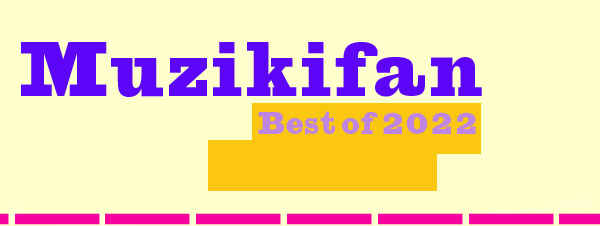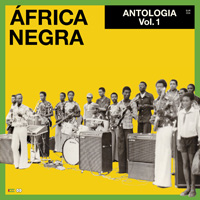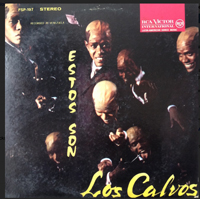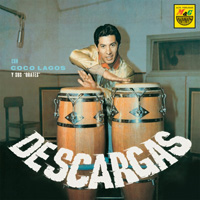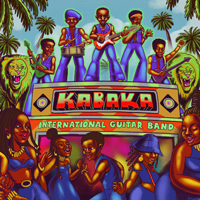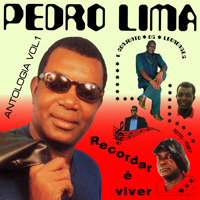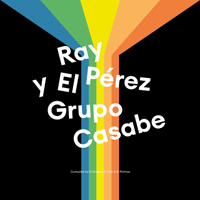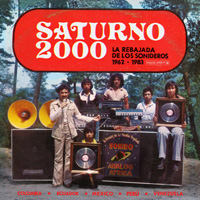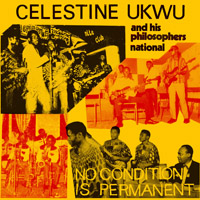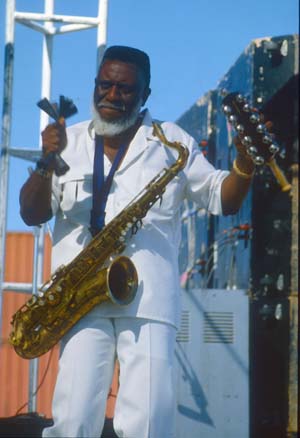Top Twelve New Releases of the Year 2022
 |
ZEB - THE SPY FROM CAIRO
ANIMAMUNDI (Wonderwheel)
A great return to his classic sound: traditional arab music meets drum patterns and Echoplex, from the Spy from Cairo. The simplest way to describe it is Arabic tradi-modern in dub (though it also includes Turkish delights and Indian flavors) and it picks up from his previous albums Arabadub (2012) and Secretly Famous (2009). Though Style Scott (1956–2014), legendary Jamaican session drummer is no longer with us, his work on Gaudi's posthumous Nusrat album Dub Qawwali set a new bar for drumming on dub albums and we hear its effect here. Known variously as Zeb, or Zeb the Pleb, the spy is Moreno Visini, an Italian of Gypsy heritage, recently resident in New York, and he has been making downtempo electronica for two decades, mixing Jamaican-style dub with bhangra and Arabic instruments. He has been heard remixing Baaba Maal and Novalima. Here, once again, he is the main musician, playing oud, qanun (zither), bass, percussion (darbouka and tablas), woodwinds (ney and bansuri), with presumably tape samples for strings (unless those are synthesized). He takes the notion of a one-man band to new heights with deft layerings, avoiding what my late friend Cheb i Sabbah said was the bane of similar electronica where you don't hear the music, you hear the ProTools. In 2020 Zeb returned to his Italian village to take care of his mother during lockdown. He brought some recent collaborators into this project including Andalucian singer Carmen Estevez who adds eerie stereo vocals to a cumbia, "Extraterrestre," and Fatou Gozlan and Duo Darbar, like souls, who followed the gypsy trail picking up music in India, Turkey and Egypt. |
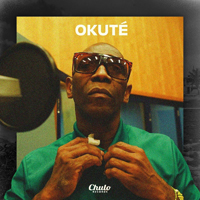 |
This is a blast of pure Cuban music unlike any we have heard in ages. Produced by Jacob Plasse (Orquesta Akokán) it kicks off with a raucous tres over some serious rumba drumming from hard hands used to imprecating and summoning the orishas in centuries-old traditional Lucumi ceremonies in the hills of rural Cuba. While the drumming is exceptional (and beautifully recorded) and the tres evokes the great later spiritual workouts of no less than Arsenio himself (on, say, Primitivo), the vocals are the dominant element. Singer Pedro "Tata" Barriel is joined by a family of percussionists: the Vizcaíno, probably the finest rumberos you could find in Havana today. By the second track, a wailing organ is introduced, which is quite superfluous but compelling nonetheless. Okuté is the Yoruba god of the oceans so in some way behind the transportation of Africans, largely Yoruba from West Africa, to the Caribbean. They had nothing on them except their chains, but were able to fashion drums and even instruments like the marimbula. On the third track, "Chi chi Ribako," we hear "Sarabanda," as a bass takes up the lead and then the tres picks out a counterpoint, again over a thick bed of eight hands slapping. Rumba meets son montuno, but the result is greater than the sum of the parts: I thought a "Sarabande" was a langorous courtly dance associated with Handel, but apparently it originated in central America in the 16th century, was then adopted in Spain where it was considered disreputable! As this anti-sarabande builds, a horn section comes in and we wonder where they can possibly go next! Well, the answer is a delicate string section, over acoustic bass leading us into "Gaston's rumba," another languid piece which then goes quite cockeyed as the tresero, Coto, paints a wild Cubist portrait inviting the others to get in on the simple three-chord progression. The tres also animates another lyrical interlude "Orakinyongo," where again the strings float in on a cloud to show that it's not all hard hands and frantic declamations. These interludes break up the more traditional rumba, which you can imagine goes on much longer than the three or four minutes per track here. However the CD, which is only half an hour in length, is extremely well executed and sequenced and makes you want to put it on repeat.
|
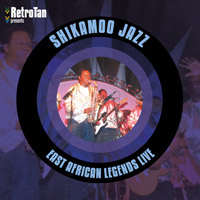
|
SHIKAMOO JAZZ
EAST AFRICAN LEGENDS LIVE (RetroTan RT-006)
The Shikamoo Jazz album that came out on RetroAfric in 1995 quickly established itself in heavy rotation on my home speakers. Salum Zahoro guitarist of Kiko Kids, Juma Mrisho of Urafiki Jazz, Kassim Mponda from Western Jazz, and former members of Dar Jazz, NUTA Jazz (vocalist John Simon), Les Maquis (Bakari Majengo, sax and congas), Vijana Jazz (drummer Athumani Manitcho) and Les Wanyika (guitarist Mohammed Tungwa) bonded together to play music for fun and also to generate some income in their old age. They were bankrolled and set up by Ronnie Graham whose instinct, that age was no barrier to making music, proved right. He, of course, is the author of the two volumes of the indispensable Da Capo Guide to Contemporary African Music.
The eleven members had been bandleaders as well as top performers but meshed well and soon were a top social act in Dar. In 1995 they even toured to Kenya where mature fans well remembered their sound, and they were often joined on stage by other veterans, Kenyan singer-songwriter Fundi Konde and taraab singer Bi Kidude from Zanzibar. That album was titled Chela Chela vol 1 and I long entertained the hope that a sequel would appear. Well, all good things come to he who waits. In 1995 the band even made it to England where they appeared at WOMAD, bringing along their famous guest artists, and were joined on stage by Mose Se Sengo, aka "Fan Fan", the legendary Congolese guitarist who was resident in England. It was probably his idea that the National Sound Archive send along engineers to record the show (since I have seen some of his old cassettes housed there!). Unlike other festivals, no one gave them a time's up sign and they played for three hours, getting stronger as the show went on. Fundi Konde, whose career peaked half a century before the WOMAD show, was the first person to play electric guitar in East Africa. He steps up to perform "Mama Zowera" (the original is on his Retro CD) and the sublime Taraab-tinged "Nakuomba Radhi," recorded with his band Fundi Jazz about 1980, which was also reprised on the first Shikamoo CD. We hear the big ballroom sound that suits their music so well, with a haunting sax (the great Ally Rashid) glancing about behind the vocal and no urgency to get the song done in three minutes flat. Bi Kidude does some vocal improv causing the keyboard player and horn men to improvise also on a loose "Kijiti." The last two tracks are stone jams (most of the band were teetotal so don't get the wrong impression) with Fan Fan lighting up the night sky on "Nilole Halwandi."
|
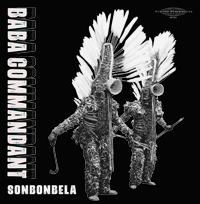
|
BABA COMMANDANT & THE MANDINGO BAND
SONBONBELA (Sublime Frequencies)
This is one of two bands I would have gone to see live had I been at WOMAD in UK this year. The album, their third, captures the excitement of a live show and, as I am unlikely to get to Burkina Faso soon, I will settle for the buzz it generates. (Speaking of civil unrest, Mali, Chad, Guinea and Burkina Faso have all had military coups in the last two years.) The band is tight, powered by solid trap drumming from Abbas Kabore, but the effects on vocals and guitar allow those parts to overflow the rhythm creating a nice giddy imbalance like they are swinging on the verge of chaos. Issouf Diabaté is the guitar wizard on here, every bit as flashy and potent as Bombino or his Diabaté namesakes, that is Sekou "Bembeya" Diabaté ("Diamond Fingers"), Sekou "Bambino" Diabaté or Zani Diabaté. The traditional aspect of the band — the Mandingo part — is singer Mamadou Sanou who plans Doso ngoni and the balafon player, Nickie Dembélé, who doubles on percussion. The hype for the album mentions "dance floor bangers," "Fela-inspired groovers," and goes so far as to draw comparisons to Captain Beefheart's Magic Band. This reminds me of the story of Jimi Hendrix seeking out Docteur Nico in Paris (which is demonstrably false), but it suggests that to validate African musicians they have to be ranked alongside Western counterparts. So, I did not say Okaidja's acoustic guitar reminded me of John McLaughlin, because then you would demand more proof. It was just a feeling, and I no longer own The Inner Mounting Flame to verify the comparison. But I don't think I hear anything like the Magic Band in here. Some reviewer must have planted that notion in the label's head. Yes, Sanou has a gravelly voice, but his ngoni playing is clean and clear (unlike Van Vliet's free-form horn squawks), and while Beefheart had a marimba player (called Ed Marimba), he was more asymmetric than the keen continuo we get here. The percussion here is complex, with congas in counterpoint to the traps, and we might approach something like the Magic Band's forced disrhythmic vocabulary, but again Commandant's men are more accomplished in that department. Don't get me wrong, I am a huge Beefheart fan, I just feel there must be more apposite analogies for the music of this Mandingo Band. I certainly hear echoes of other West African bands, but then you would, wouldn't you? This is a great album, full of drive and the sense all of them are in control of their aspect of the sound and striving to push it to the max. |
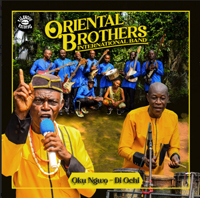
|
ORIENTAL BROTHERS
OKU NGWO – DI OCHO (Palenque Records)
It's like they never went away. Technically, they didn't, but we have not really heard from the Oriental Brothers since Original Music, Flametree and Afrodisia put together some compilations of their early albums. This Igbo Highlife group came from Eastern Nigeria, hence the "Orient" in their name. Established in 1973 by brothers Dan Satch Opara (lead guitar), Godwin Kabaka Opara (rhythm guitar), and Sir Warrior (singer) they ruled the airwaves, not only in West Africa, but as far way as Cartagena, Colombia where the sound system DJs idolized their bright polytonality. It's this transatlantic connection that has brought the group back to the studio, after a 20 year hiatus, to celebrate their 50th anniversary with a new album. The original line-up had a hit album on Decca in 1974 and then broke into three factions, all claiming the name. Dr Sir Warrior had the most popular band (Oriental Brothers International) until his death in 1999. Godwin Kabaka founded his own band in 1977, his lyrics were proverb-laden, his music combined traditional sounds with other influences from Ghana and even Congolese guitar. A classic collection of Kabaka's material was reissued by Palenque Records recently [see below], so this reunion is the logical next step. As the last man standing, guitar heavy Dan Satch now carries the mantle. There is great continuity in their sound, though only the original conga player has survived the five decades. Nevertheless we have the sweet insistent sound of 70s highlife on a thick layer of percussion, traps, congas and other percussion, wiry guitar, throbbing bass, and long discursive vocals. The ten-minute tracks expand outwards and blend together. |
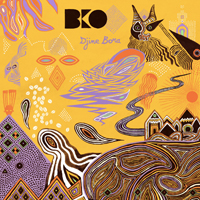
|
BKO
DJINE BORA (Self)
A strong return from BKO the Malian quintet, who summon a djinn (the title translates as "the appearance of the genie" — I just read the Norwegian equivalent of "speak of the devil" is "Mention a goblin and he's already in your hall") so we expect a spirited invocation and they deliver. Formed in 2012 their name is the call sign of the international airport in Bamako. The year they were formed the government declared a state of emergency and if you follow the news you know things have gone from bad to worse. The military government has now expelled the UN peace keepers who were chasing the Boko Haram insurgents. They and the derelict remnants of the Libyan incursion are now at the gates of the military compounds where the Malian army is hiding. But the music endures. The members of BKO come from divergent traditions: griots and Bambara hunters (who have different instruments and approaches to song). They merge in the family of BKO with two vocalists (Fassara Sacko, Khassonké Dunun), plus Adama Coulibaly and Nfaly Diakité on donso-ngonis, as well as vocals, Mamoutou Diabaté on djeli-ngoni, Ibrahima Sarr on djembe, and Aymeric Krol on drum kit. I hear electric guitar in there also. I have seen them in concert and they are explosive. Sacko, the lead singer on half the tracks has a great throaty voice, but sadly is going blind. Here he sings about infant mortality, poverty and problems of migrants. One song that jumped out at me is titled "Bamako": from the moment it started I heard "I will follow him" by Peggy March, an American pop song from 1963 with a catchy riff. Yes, you say, there are only so many chords in pop music, but when the riff and the rhythm coincide so forcefully, I am sure there's a connection. "BKO Kagni" the next track, is another example, it has what I call the "Baby please don't go" rhythm, heard on so many Ali Farka Touré tunes. There's great variety and a driving insistence to their music that will draw you in.
|
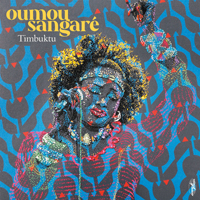 |
The great Malian songbird is back with a strong set of traditional and rocking music from Wassoulou. Since the days when Ali Farka Toure coyly denied having ever listened to John Lee Hooker, Malians have come to embrace a strong R&B component in their sound. Her band features Mamadou Sidibé on ngoni, keyboards and backing vocals, Pascal Danaë on guitar, dobro and keyboards, Nicolas Quéré on clarinet, keyboards, percussion and mixing deck, Baptiste Brondy on drums, and Eliézer Oubda, from Burkina Faso, on keyboards and engineering. That's quite a set of diverse and cosmopolitan musical talents. Danaë, a wicked dobro player, is a Guadeloupean resident in Paris, known to me for his part in Delgrès, but also has backed Gilberto Gil, Peter Gabriel, Youssou, Neneh Cherry and many others. Baptiste Brondy, the drummer, is also one of the fierce Delgrès trio, so she has absorbed 2/3rds of that group into her tight unit. There is a long tradition of Antillean musicians in Paris when we think back to Eddy Gustave and his blends of African and Caribbean music, or further back to Ry-Co Jazz in the 60s. The musical envelope is a perfect container for Oumou's still-solidly Malian vocals, without falling into the big arena ponderousness that, for me, scuttled her compatriot Salif Keita's later recordings, after he moved to Paris. There is some of the "atmospherics" we associate with Salif and maybe this will eventually sound as dated, but I think these guys are really masters of their equipment. On "Kêlê Magni," which is a title I recognize from Bassekou Kouyate, I hear balafon and assume it's a keyboard sample, but there's definitely a kora in here. Or am I wrong? The sweetly stinging dobro is a strong element and a nice counterpoint to her plaintive vocals on the ballads. |

|
It's been 15 years since Björk invited the members of Konono No 1 to tour with her in 2007. She was among the first to use the gritty urban sounds (descendants of Zombo ritual music, originally played on elephant tusks) as a basis for her world music explorations. In the last two decades we have had some more or less successful forays into the trance genre of electric likembes with home-made percussion and rudimentary D-I-Y amplification serving as the basis for "world beat" improvisers. Now the Congotronix boom continues with another layer added due to a chance encounter in the Paris metro. Algerian DJ Nadjib ran into another DJ, Aero Manyelo from South Africa, in the musty Paris underground and as they chatted they discovered that their musical backgrounds from the top and bottom of Africa collided in the heart, Kinshasa, and their shared passion for the Congotronix sound. Manyelo cut his teeth in Jo'burg remixing Mahotella Queens while Nadjib was working with Gnawa Diffusion in Algeria. They found quite a few Congolese musicians, including members of Kasai All Stars, already in France and Belgium, willing to get involved. Taking tracks from recently disbanded Mbongwana Star they added flutes and beats. They created music in the studio, but also through jamming live in concert with their newfound friends from the Congo. Joining in are Wengu Waku, singer from Konono No 1, Muambuyi, singer of the Kasai All Stars and soukous guitarist Mopero Mopumba of Basokin. There are still strong folkloric strains in the vocals as the singers bring melodies from the bush, singing about animals and birds of the Kasai region in Tshiluba, or the need for community in Swahili. Their message is about survival in the midst of conflict and strife. I am not sure if the crackling on "Chibinda Ilunga" represents the fizzling surface of an old record (there is a Berber-sounding flute on here) or the sparking of a log fire. Here the ancient-to-future blend works well, though in large part because it is now quite familiar to us (In fact you will recognize the samples on "Bonjour"). This collaborative effort extends to art, photography and fashion as the two DJs present an entire aesthetic experience based around their explorations of Congolese traditions updated to the 21st century. |
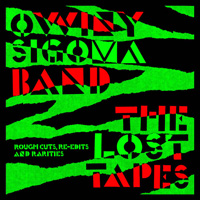 |
Subtitled "Rough cuts, Re-edits and Rarities," this is an unusual collaboration. Some young Brits into the whole turntablist movement ventured into the bhundu in Kenya back in 2009, and met some real authentic old-time Luo musicians: Joseph Nyamungu singing and playing the nyatiti lyre and Charles Owoko on nydounge drum. On the part of the wazungu, Tom Skinner added rhythm tracks and Jesse Hackett and his brother Louis added bass and effects. Since then they have released four albums, a few dub plates and so on. Billed as the final installment of the collaboration (one of the African members having died), the group took it on the road to England and back to East Africa. They have added Lawrence Okelo from Uganda on xylophone and adungu (an arched harp) for even more layers of traditional sound. The result is fantastic: a wonderful light balance where the electronics and studio effects enhance the sound and complement it, showcasing it, rather than subsuming it (except when the Space Invaders zap the tune in "Deep Charles"). Coming in at the end of this creative project is not a problem, you can venture backwards into their earlier work via bandcamp. The nyatiti lyre and traditional drum never sounded so clear and I am sure the musicians enjoyed the respect their work garnered and were probably as thrilled to hear the recordings as their elders 7o years ago when Hugh Tracey came through with his massive reel-to-reel deck. I don't think Hugh would have applied the Space Echo and loops quite so determinedly, had he had them, but he would have appreciated the craft in the way the project has been presented so the complex layers are revealed as the album progresses. The final track, "Rumba," is a simple repeated riff propelled by trap drums and brings everyone together, showing the hypnotic power of a good hook.
|
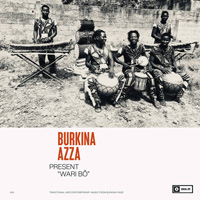 |
BURKINA AZZA
WARI BO (Social Joy)
A great find from our Washington bureau chief, Ken, this is some deep roots music from Burkina Faso. The group is a griot collective consisting of percussionists and balafon players who continue to perfect and hand down their Bwa cultural patrimony. The label owner heard them by chance at a street drumming festival, posted on facebook, and managed, despite the pandemic to get them on record in Ouagadougou and then issued this stellar album. Four of them are named Koeta and one is a Koita and all are multi-instrumentalists. The line-up is simple, djembe, bara (a simple gourd drum with stretched goatskin head), and balafon. Fantastic playing: lyrical balafon, fierce percussion and soothing melodic singing in call and response style. I am guessing they shift around between instruments from track to track. This is the purest form of self-expression through music and a delight for 40 minutes. |
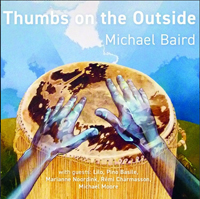 |
Michael Baird is best known as the head honcho of Sharp Wood Productions, the label that has reissued the foundational Hugh Tracey albums on CD, digitally restored, some with bonus tracks we never knew existed. He has also expanded on Tracey's fieldwork with more contemporary recordings from Zambia and his catalogue glitters with gems from top to bottom. Baird is also a percussionist and this album shows he shines in that department also. We are catapulted into a wild journey from "Baonoko Central Station" where relentless rhythms propel us into an aural landscape of moving machines in rapidly changing terrain. I hear train noises, whistles, steel wheels on rails stretching across the savannah. It's all percussion, and the pentatonic gamelan gongs (I think that's what they are) recall Harry Partch's experiments with his Gate 5 Ensemble in the 1950s, as he imagined cloud chambers with giant home-made glass bells. "Resurgent" has a passage that reminded me of Frank Zappa's band the Mothers of Invention. The album suggests myriad possible influences. Baird grew up in Zambia until he was ten, was "repatriated" to England, then moved to the Netherlands (aged 13) where he played in a blues rock band, but Africa is in his veins. This disc is more euro avant-jazz than Zamrock; he has guests on guitar, sax and flute but it's the deep echoing brass bells and marimba tones that make it for me. He also features Italian Pino Basile on cupaphone (I had to look it up), which is like an inside-out cuica. On "Ainu" I hear an electric keyboard and xylophone (again, I am guessing). The Ainu are indigenous Japanese from the deep north with no written culture, and their music has intrigued musicologists for generations as it has strong parallels to the epic songs of West African traditional griots. "Kasai neighbours" continues with a strong rhythmic thrust, suggesting the Congo's likembe rockers, without imitating them. There is tapped bottle percussion and some buzzing rattles and a wonderful distorted lead over marimba, all perfectly mixed into a trance groove. Another meditative track "Radius action" also creates a soothing dreamspace. There is great variety and compelling rhythms aplenty here. |
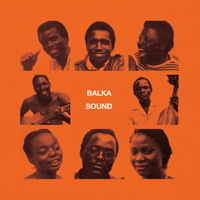 |
BALKA SOUND (Strut)
To me the mid-80s in Congo-Zaire is one of the great eras of world music. Balka Sound were active in Brazzaville then, so I am surprised I have never heard of them. I have also never heard of the Beembe people, from whom the Balka musical style originates, so this album is not only a revelation it is also a great work that was missing from my consciousness. Their sound is similar to, but a little more polished than Ali & Tams, Sim-Sim Int'l, or Kawende et ses Copains, three bands that were recorded on Plainisphere in the mid-80s that I love. It's packaged as a digital album or double LP and contains 15 of their songs, starting with 1972's hit "Ah Lusiala," celebrating their singer Albert Nkibi who plays the 5-string ngonfi. (No, I am not making this up.) In addition to electric guitars and congas, there is an exciting trap drummer (Abro) who plays contrapuntal rhythms that really excite the proceedings. On top of that a superb clarinet and saxophonist (Vieux Paul), who leaves his mark on every track. A thumb piano (sanza) also appears. They are not the first group to modernize the rural sounds of Africa, by any means, but this is fresh and very engaging. You can hear that bush voice in Albert's vocals and melodies which contain parables and the trancelike reiterated choral rejoinders. Their first album was recorded in 1979 in one take after they won a cultural festival competition. In 1982 a second LP was recorded in Kinshasa. By the mid-80s they had regular gigs at tourist hotels in Brazza, but within a decade civil war engulfed the left bank country of the Congo. They regrouped to perform for a Fête Nationale in 1996 but strife broke out again and their studio and equipment were looted, forcing them to disband. Two of their LPs are listed on discogs at 200 and 400 euros each! Here we have the cream of their output, put together by Makila Nsika Nkaya (one of the vocalists) with the cooperation of the other band members, whose superb musicianship radiates from every track.
|
